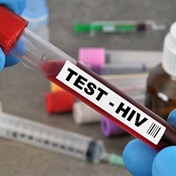Researchers have long struggled unsuccessfully to attack what they call reservoirs of dormant HIV, and the new work is in very early stages.
But University of Rochester scientists say it may be fairly straightforward to attack one of these reservoirs, blood cells called macrophages that HIV hijacks and turns into viral hideaways.The new discovery shows the exact steps that HIV takes to do that - and found that some existing drugs, including a long-used treatment for leishmaniasis called miltefosine, can block the main step and thus cause these cells to self-destruct.
A very smart virus
"It's a very smart virus," said lead researcher Dr Baek Kim. "They
have to have a very good fence to protect their house for a long time.
... Get rid of the fence, and now their house is gone." Today's drugs have turned HIV from a quick death sentence into, for many, a chronic infection. Yet those drugs don't eliminate HIV because they can't reach the two known pools of cells where the virus can lie dormant, ever ready to resurface.
So-called memory T cells form one such pool. As the name implies, these are the cells that ensure if you get, say, measles as a child, you're forever immune. They live for years, even decades, making them a logical HIV hideout, and one that scientists have repeatedly sought to dismantle to no avail.
Targeting Macrophages
Macrophages, another type of immune cell, form the second pool. They
roam the body looking for invaders like bacteria to gobble up. If they
get harmed, such as becoming infected by a virus, they are supposed to
commit suicide. But HIV instead keeps them alive long past their normal
lifespan.
"Up to now, nobody has really thought about how to eliminate the macrophage reservoir," said Dr Kuan-Teh Jeang, an HIV specialist at the National Institutes of Health. "The imagination now has turned toward, 'How do we eliminate reservoirs?' ... The best way to address our problem is to simply kill those cells."
The Rochester team found that HIV produces a protein that turns on a particular cell-survival pathway. After a multistep process, it ultimately activates an enzyme called Akt that in turn prevents cell suicide, the researchers reported Thursday online in the journal Retrovirology.
That was good news, Kim said, because the Akt pathway is a culprit in certain cancers - meaning oncologists have been trying to target it for some time. So Kim put human HIV-infected macrophages in lab dishes and started adding drugs known to block the Akt pathway, to see if any killed the cells.
Two drugs worked
He had luck: Miltefosine and a cousin named perifosine both rapidly
killed the macrophages, thus depriving HIV of this hideout.
Perifosine is currently being studied as a possible cancer drug. But miltefosine is known to be safe through its use in leishmaniasis patients. So Kim's goal is to rapidly study the already available miltefosine in animals, to see if it truly targets infected macrophages well enough to then test in HIV patients.
"The evidence they show is in fact pretty good," said NIH's Jeang, who says the next step should be a test of miltefosine in monkeys infected with SIV, the monkey version of the Aids virus. – (Sapa-AP)
Read more:
HIV/Aids Centre
February 2008




 Publications
Publications
 Partners
Partners














